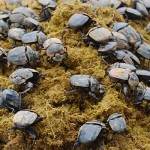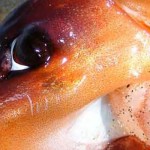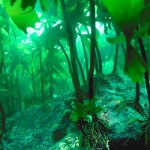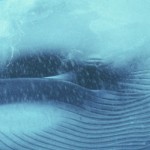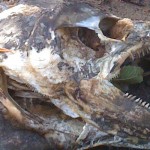Scientists have long designated the california sea otter a “keystone predator,” meaning what the animal eats has a large impact on its environment. The otters devour extraordinary amounts of sea urchins that otherwise would gobble up the kelp that grows in profusion off the state’s central coast, and kelp forests, in turn, are home to rockfish, perch and many other fish, as well as invertebrates galore, including crabs, barnacles and worms.
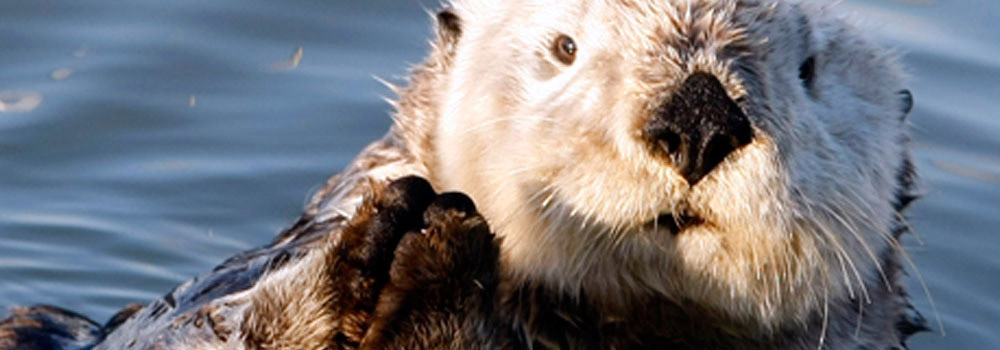 New research by Tim Tinker, a biologist with the U.S. Geological Survey in Santa Cruz, California, shows that sea otters are not only voracious but highly specialized eaters, organizing themselves into groups that zero in on different prey. The findings may help scientists better understand why the sea otter comeback, never a resounding success, now appears to be sputtering.
New research by Tim Tinker, a biologist with the U.S. Geological Survey in Santa Cruz, California, shows that sea otters are not only voracious but highly specialized eaters, organizing themselves into groups that zero in on different prey. The findings may help scientists better understand why the sea otter comeback, never a resounding success, now appears to be sputtering.
Unlike most marine mammals, otters have no blubber to insulate them, so they must consume 25 percent to 35 percent of their body weight each day to fuel their metabolism and maintain a healthy internal temperature in the chilly Pacific. Not surprisingly, otters spend most of their days diving for food and eating. What is surprising (to those who think of tool use as a primate skill, or at least a terrestrial one) is that otters use rocks they hide in an underarm pouch to pry open shells.
Hunted for their fur, California sea otters (a.k.a. southern sea otters, distinct from the northern Pacific subspecies found from Washington to Alaska) were nearly wiped out by the turn of the 20th century. An international treaty banned otter and fur seal hunting in 1911. Californians believed that otters had disappeared from the coast until in 1938 a Big Sur rancher sighted a group of only about 50 animals.
Since then, the California otter population has grown slowly, reaching some 2,700 in 2010. Researchers are concerned the rebound has lagged behind that of northern otters, which number in the tens of thousands off Washington, British Columbia and Alaska.
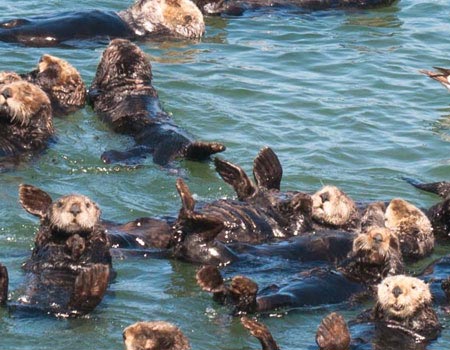 Tinker says the California otter’s failure to mount a strong comeback may be tied to pathogens and pollutants in coastal waters. By capturing otters and outfitting them with depth recorders and radio transmitters, Tinker and his co-workers have found they form what he calls “dietary guilds.” Deep-diving otters eat mostly abalone, urchins and Dungeness crabs. Otters diving to medium depths—say, up to 40 feet—forage for clams, worms and smaller shellfish. Still others—the junk food eaters—stay in shallow waters, filling their pouches with black snails. Mothers pass these preferences on to their pups, inducting them into their respective guilds.
Tinker says the California otter’s failure to mount a strong comeback may be tied to pathogens and pollutants in coastal waters. By capturing otters and outfitting them with depth recorders and radio transmitters, Tinker and his co-workers have found they form what he calls “dietary guilds.” Deep-diving otters eat mostly abalone, urchins and Dungeness crabs. Otters diving to medium depths—say, up to 40 feet—forage for clams, worms and smaller shellfish. Still others—the junk food eaters—stay in shallow waters, filling their pouches with black snails. Mothers pass these preferences on to their pups, inducting them into their respective guilds.
Moreover, animals eating mostly snails in the more developed Monterey Bay were more likely than others to contract the parasite Toxoplasma gondii. Researchers don’t know how otters encounter the parasite, but it’s found in cat feces, and they speculate it could wind up in the ocean when cat litter is flushed down the toilet or when rain washes feral or domestic cat waste into storm drains and the bay. In contrast, otters that consumed mostly clams and worms were more likely to be infected with Sarcocystis neurona; the source of this parasite in the otters’ environment is also not known, but it’s found in opossum feces and could possibly be washed into the bay by rainwater. Otters may have little natural immunity to these terrestrial pathogens, which can kill them outright or impair their ability to swim, possibly leaving them more vulnerable to sharks.
“We absolutely think those parasites are getting into the ocean in much greater numbers due to the way we modify the landscape,” says Tinker. “All the bacteria and viruses that we’re producing within a couple miles of the oceans are being washed directly into that near-shore area, and we think sea otters are bearing the brunt of that.”
In that sense, the California sea otter is not just a keystone of the marine environment but also an indicator. If otters are healthy, the ocean probably is, too. When the otter population is struggling, the near-shore waters they inhabit may be in trouble. “In terms of sea otters, you are what you eat,” says David Jessup, a veterinarian at the Marine Wildlife Veterinary Care and Research Center in Santa Cruz. “At least here in California.”

